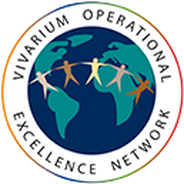Important Resources
European Commission
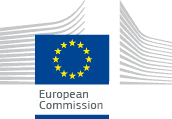 European Commission (EC)
European Commission (EC)
EC website for animals used for scientific purposes
The EC website contains useful information regarding the implementation of the legislation, the 3Rs, statistics and latest updates.
EC publications and guidance material
This page of the EC website provides a link to free downloadable colour posters and guidance documents on important topics including: animal welfare bodies, education and training, inspection and enforcement, project evaluation and retrospective assessment, as well as severity assessment.
EURL ECVAM is the European Union Reference Laboratory for alternatives to animal testing. It is involved in validating and promoting alternative testing methods. The website is a good source of advice on theoretical and practical aspects of test validation, the current state of validation of alternative methods, as well as general animal welfare issues such as the use of genetically altered animals.
Legislation
This is the European Directive on the protection of animals used for scientific purposes which was adopted on 22 September 2010.
S.I. No. 543 of 2012 – European Union (Protection of Animals Used for Scientific Purposes) Regulations 2012
European Directive 2010/63/EU was transposed into Irish law as statutory instrument 543 of 2012 and the HPRA is the competent authority for these Regulations.
S.I No. 434 of 2013
This is a short amendment to S.I. No. 543 of 2012, which established the National Committee on 1 December 2013 and made other minor changes.
S.I. No. 174 of 2014
This is a further short amendment to S.I. No. 543 of 2012, which gives effect to the establishment of a common reporting format for statistical information to the EU.
General 3Rs Information
Replacement, Reduction and Refinement (3Rs)
The 3Rs refer to the terms Replacement, Reduction and Refinement, principles which were originally defined by William Russell and Rex Burch in 1959. The 3Rs aim to improve the welfare of animals used in science or education, while advancing the quality of scientific and medical testing. The 3R principles remain a fundamental concept in laboratory animal science today, underpinning EU and national legislation on the protection and welfare of animals used for scientific purposes. These principles also apply to the conduct of studies used in domestic animals as well as wild animals or birds that might be the subject of research projects.
Article 4 of EU Directive 2010/63/EU describes the requirements for the 3Rs.
General 3Rs information:

The NC3Rs (National Centre for the Replacement, Refinement and Reduction of Animals in Research) is the UK’s national organisation which works to discover and apply new technologies and approaches to replace, reduce and refine the use of animals in science. It is an excellent resource for all 3Rs related information.
The ARRIVE (Animal Research: Reporting of In Vivo Experiments) guidelines by the NC3Rs are a helpful set of guidelines created with the intention of improving the reporting of research using animals. The HPRA encourages the use of the ARRIVE Guidelines when designing animal studies.
This database is a collaboration between Norecopa, which is Norway’s 3R Centre, and the US Department of Agriculture’s Animal Welfare Information Center. It is a searchable 3Rs database with resources such as guidelines, journals and websites.
This is a Canadian website dedicated to the 3Rs which has a 3Rs search guide, as well as other resources for researchers using both farm and laboratory animals.
Replacement

Article 4 (1): “Member States shall ensure that, wherever possible, a scientifically satisfactory method or testing strategy, not entailing the use of live animals, shall be used instead of a procedure.”
The HPRA understands this to mean that ‘alternative’ methods are to be used where possible instead of live animals. Examples of alternative methods would include in vitro tests such as cell lines, computer simulation and modelling, video material, or the use of invertebrates such as fruit flies or worms. However, in cases where there is no alternative to the use of live animals, the HPRA’s goal is to ensure that the highest standards of animal welfare and care are applied.
Links on REPLACEMENT
EURL ECVAM is the European Union Reference Laboratory for alternatives to animal testing. It is involved in validating and promoting alternative testing methods. The website is a good source of advice on theoretical and practical aspects of test validation, the current state of validation of alternative methods, as well as general animal welfare issues such as the use of genetically altered animals.

FRAME is the Fund for the Replacement of Animals in Medical Experimentation and its ultimate aim is to eliminate the need to use laboratory animals in the future. Until this is possible, FRAME works to support Reduction. The FRAME website has information about good experimental design (including training courses), and current projects which are working to identify non-animal alternative test methods.
TSAR is the Tracking System for Alternative test methods review, validation and approval in the context of EU Regulations on chemicals. The website provides information on the status of alternative methods as they progress from scientific proposals, through development, validation and regulatory approval, to eventually being used in a regulatory context.

NORINA is a Norwegian Inventory of Alternatives, a database containing information on over 3,500 audiovisual aids that may be used as alternatives or supplements to the use of animals in education and training.
Reduction

Article 4 (2): “Member States shall ensure that the number of animals used in projects is reduced to a minimum without compromising the objectives of the project.”
A common misconception is that Reduction simply refers to decreasing the total number of animals used for scientific purposes. However, the principle of Reduction is to ensure that the appropriate number of animals are used for each project. This allows scientists to obtain statistically robust data without using more animals than are necessary. The use of more animals than necessary in a project is not in keeping with the principle of Reduction. However, using too few animals in a project is not in keeping with the principle of Reduction either, and can be equally detrimental. If too few animals are used in a project, the results obtained may not be reproducible and therefore are invalid and the animals used for this purpose will have gone to waste. Therefore the HPRA believes that Reduction should start with good experimental design and planning.
In addition, Reduction applies to the sharing of resources and tissues between research groups. The use of new technologies can also reduce the need for additional animals. For example, new imaging techniques can facilitate longitudinal studies in the same animal, rather than having to use multiple animals at various points in time through a study.
Links on REDUCTION

FRAME is the Fund for the Replacement of Animals in Medical Experimentation and its ultimate aim is to eliminate the need to use laboratory animals in the future. Until this is possible, FRAME works to support Reduction. The FRAME website has information about good experimental design (including training courses), and current projects which are working to find non-animal alternative test methods.
The Experimental Design Assistant
The Experimental Design Assistant is an NC3Rs online tool to guide researchers through the design of their experiments in order to ensure that they use the minimum number of animals consistent with the scientific objectives, as well as using methods to reduce bias.
The ARRIVE (Animal Research: Reporting of In Vivo Experiments) guidelines by the NC3Rs are a helpful set of guidelines created with the intention of improving the reporting of research using animals. The HPRA encourages the use of the ARRIVE Guidelines when designing animal studies.
Interspecies Differences www.interspeciesinfo.com
The Interspecies Database helps researchers to make an optimal choice of species and strain of animal model, which is essential for efficient extrapolation of animal data to humans or other animals.
Refinement

Article 4 (3): “Member States shall ensure refinement of breeding, accommodation and care, and of methods used in procedures, eliminating or reducing to the minimum any possible pain, suffering, distress or lasting harm to the animals.”
The HPRA understands Refinement to mean that animals used for science are provided with the best possible care and that suffering is reduced to an absolute minimum whilst undergoing procedures. Refinement techniques would include, for example, careful handling by trained individuals, the provision of high standards of housing and husbandry to include enrichment materials (e.g. toys and nesting material) and the appropriate use of anaesthesia and pain relief during procedures.
Links on REFINEMENT
Vivarium Operational Excellence Network
This is a website created to advance the care of laboratory animals through innovative management tools and concepts.

This is a US based site, which provides information on improved animal care and use in research, testing, and teaching.

This excellent website provides free interactive resources to support the training of laboratory animal research workers and to continue the professional development of others who work with laboratory animals. E-learning modules include assessment of welfare and laboratory animal anaesthesia.
This website created by the 3Rs-Centre Utrecht Life Sciences provides useful guidance on how to apply humane endpoints and identify pain and distress in mice and rats.

This is a website which provides a series of resources (such as videos) to support the adoption of best practice for commonly used procedures in animal research.
Links on Model Refinements
The HPRA strongly encourages scientists to work on refining their animal models. The following papers are recommended reading:
- Lilley, Elliot, et al. Refinement of animal models of sepsis and septic shock. Shock 43.4 (2015): 304-316. (free to download)
- Lidster, Katie, et al. Opportunities for improving animal welfare in rodent models of epilepsy and seizures. Journal of neuroscience methods 260 (2016): 2-25. (free to download)
- Wolfensohn, Sarah, et al. Reducing suffering in experimental autoimmune encephalomyelitis (EAE). Journal of pharmacological and toxicological methods 67.3 (2013): 169-176.
- Wolfensohn, Sarah, et al. Reducing suffering in animal models and procedures involving seizures, convulsions and epilepsy. Journal of pharmacological and toxicological methods 67.1 (2013): 9-15.
- Hawkins, Penny, et al. Applying refinement to the use of mice and rats in rheumatoid arthritis research. Inflammopharmacology 23.4 (2015): 131-150.
Laboratory Animal Organisations
Laboratory Animal Organisations
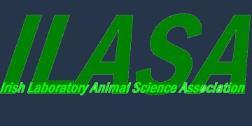
Irish Laboratory Animal Science Association (ILASA)
ILASA’s aim is to promote high ethical and welfare standards in the use of animals for scientific purposes, and the website contains information about membership and the latest updates.

Federation of European Laboratory Animal Science Associations (FELASA)
FELASA represents common interests in the furtherance of all aspects of laboratory animal science and beyond. The website provides access to useful guidelines, recommendations and reports which are published by expert working groups on topics such as health monitoring, training and education, transgenics, veterinary care of laboratory animals and ethical review.

Institute of Animal Technology (IAT)
The IAT website contains information about the use of animals in research and careers in animal technology.
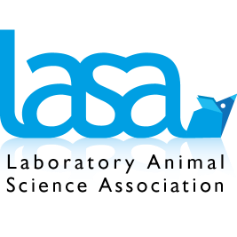
Laboratory Animal Science Association (LASA)
The LASA website contains information about membership, the UK legislation, openness on animal research, as well as useful publications on topics including: severe suffering, good practice for animal welfare bodies and ethics committees, and a guide on aseptic surgery.
Laboratory Animals Veterinary Association (LAVA)
LAVA is a non-territorial specialist division of the British Veterinary Association (BVA), intended for veterinarians with an interest in laboratory animals, and membership is required to access resources.

This joint website is for members of the European Society of Laboratory Animal Veterinarians (ESLAV) and the European College of Laboratory Animal Medicine (ECLAM).
Education and Training
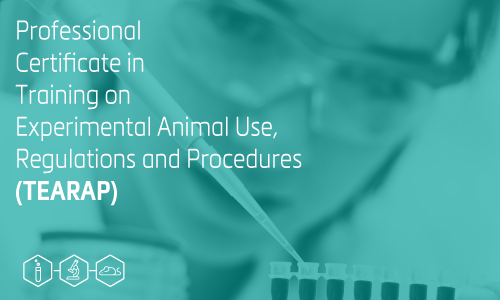
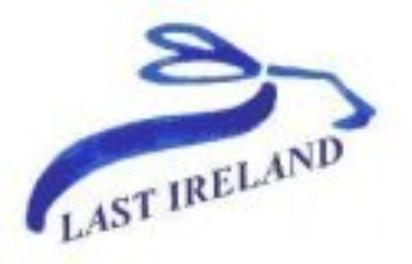 Please click on our Training Requirements & Courses page for links to course providers.
Please click on our Training Requirements & Courses page for links to course providers.

